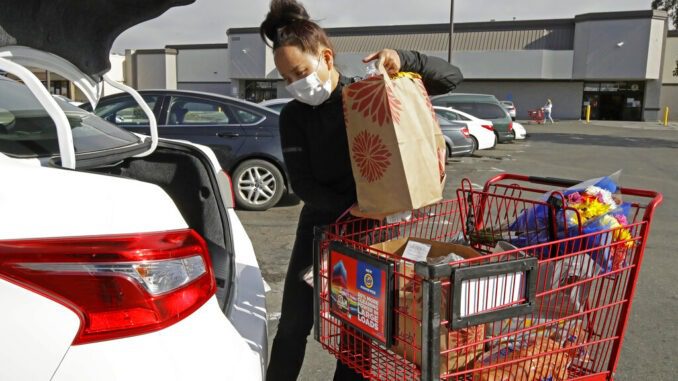
Side gig. Side job. Side hustle. It goes by many names and serves many purposes. For some, it’s a way to keep the lights on. For others, it’s an opportunity to save for a goal or follow a passion.
Since the onset of the COVID-19 pandemic, millions of Americans have become unemployed. Many are turning to the gig economy to make money. And it’s booming.
“Obviously online shopping has become huge, and so delivery services are packed. You’ve got Amazon Flex trucks practically ramming into each other,” says Kathy Kristof, editor at SideHusl.com, a website that reviews hundreds of online money-making platforms.
Before you rush into a side gig, scrutinize the risks, the pay and other important details. Here’s how to choose the right pandemic side job for you.
ASSESS YOURSELF FIRST
As you begin searching for a side hustle, think about your experience, skills and interests. But more importantly, consider what you’re comfortable doing.
Are you willing to be in close contact with other people, or would you prefer a socially distant position? Are you part of a high-risk group for COVID-19? What would happen if you got sick and couldn’t work? The answers to these questions will help you decide what jobs to pursue.
If either your health or financial life could be ravaged by illness, you’re going to have to be more careful than the people without those risks, Kristof says.
“Somebody who doesn’t have that same sort of risk might feel completely comfortable doing contact-free deliveries for Grubhub or Dumpling or any of these other delivery services,” Kristof says. “But somebody who is high risk, you want an online job like online tutoring.”
EXPAND YOUR DEFINITION OF ‘SIDE GIG’
“Side gig” has become synonymous with a handful of jobs: dog walking, delivering groceries and driving for Uber or Lyft. But these aren’t the only opportunities occupying the space.
You can teach a virtual yoga class, for example, sell clothing online or work as a freelance designer. Through services like TaskRabbit, you can get paid to do odd jobs like yard work and assembling furniture.
Side and part-time jobs tend to rise during economically uncertain times, according to Brie Weiler Reynolds, career development manager at FlexJobs, a job-search site for remote and flexible jobs. Chances are there’s something up your alley.
Roles outside the gig economy can be worth exploring, too. Features typically associated with side gigs, including flexible schedules and the ability to work from home, are increasingly spilling over into professional roles. Remote jobs posted on FlexJobs in career categories such as marketing, sales and project management have increased over 50% since March, according to a recent analysis from the site.
“Because we’ve never had to do this from home before, there was never as much acceptance. Now you’re getting widespread acceptance from the whole of corporate America,” Kristof says.
PROTECT YOURSELF AND YOUR FINANCES
Once you narrow down your choices, dig into the details. Get a sense for what it’s like to work in a role, what the requirements are and how much you’re likely to earn before you commit.
You can avoid surprises by looking up a company’s Better Business Bureau rating, reading through the fine print on its website and checking out reviews on sites like SideHusl and Indeed.
“Let’s say you’re interested in delivery jobs, and you’ve got DoorDash, Instacart and Postmates. You want to look at each site and see what the fees are,” Weiler Reynolds says.
Many platforms charge registration, listing or commission fees, which can cut into your earnings. Some gigs also require you to pay expenses like gas and insurance for your vehicle. If you’re a rideshare driver, delivery driver or mover, your personal auto insurance policy doesn’t cover you for commercial risk, Kristof says.
“Some online platforms automatically cover you with a commercial policy. Others do not. So you should always look for that if you’re working for an online platform,” Kristof says.
Still, that won’t necessarily cover you in all circumstances, such as when you’re en route to pick up an order. Talk to your insurance company to ensure you get the proper protection.
You’ll also want to find out whether you’ll be classified as an employee or independent contractor. This determines how you’ll pay taxes and whether or not you’ll be entitled to certain benefits. Independent contractors need to set aside a portion of their pay for taxes themselves. Employers automatically withhold income taxes for employees and usually offer health insurance, 401(k) matches or paid time off.
Weiler Reynolds says freelancers or contractors may also have to pay taxes quarterly, which can be a bigger time investment.
Don’t forget to make safety a priority. Find out what protective measures the company or local government requires while you’re on the job. If you’re unable to avoid contact with others, prepare to take appropriate precautions, such as wearing a mask or gloves.

